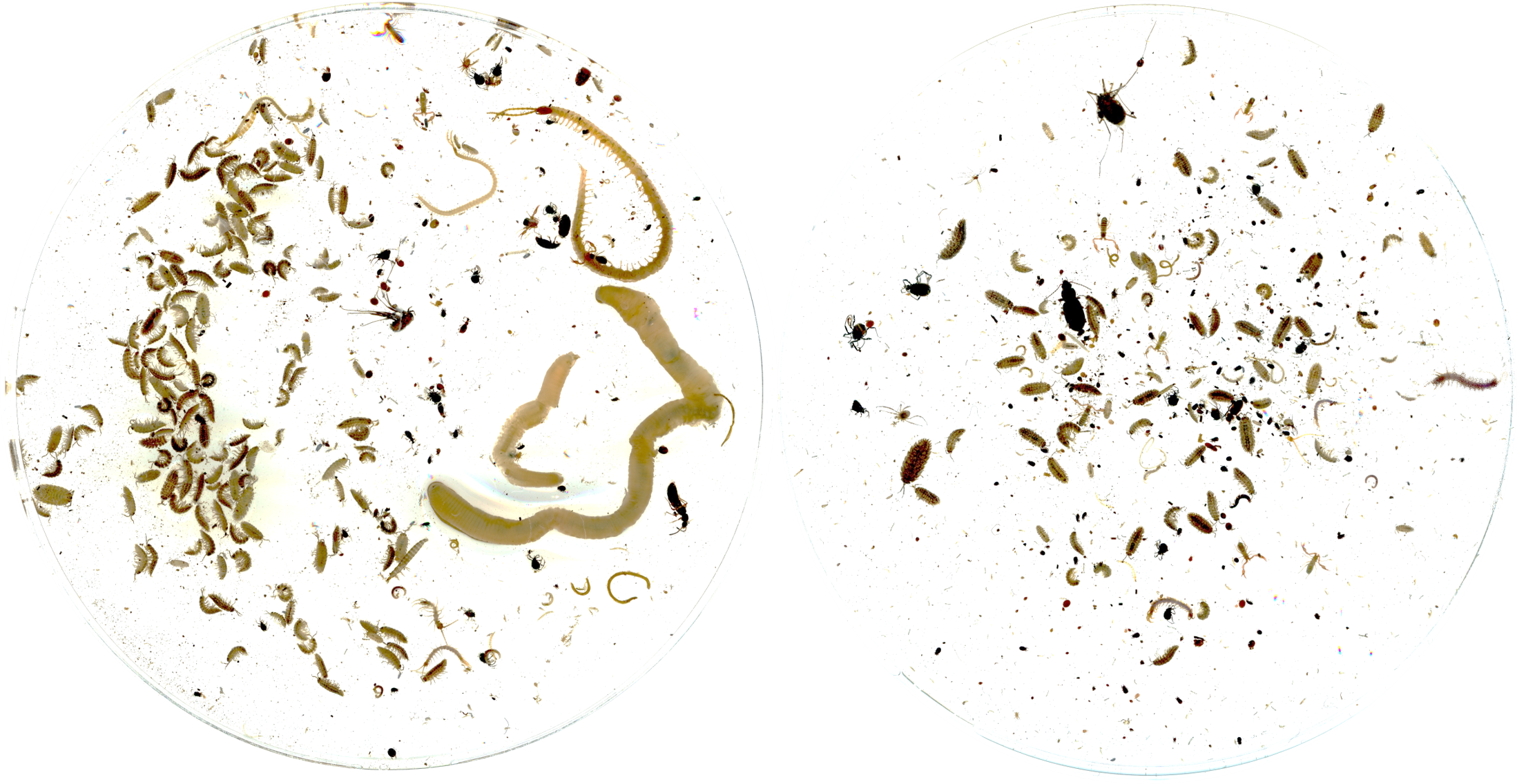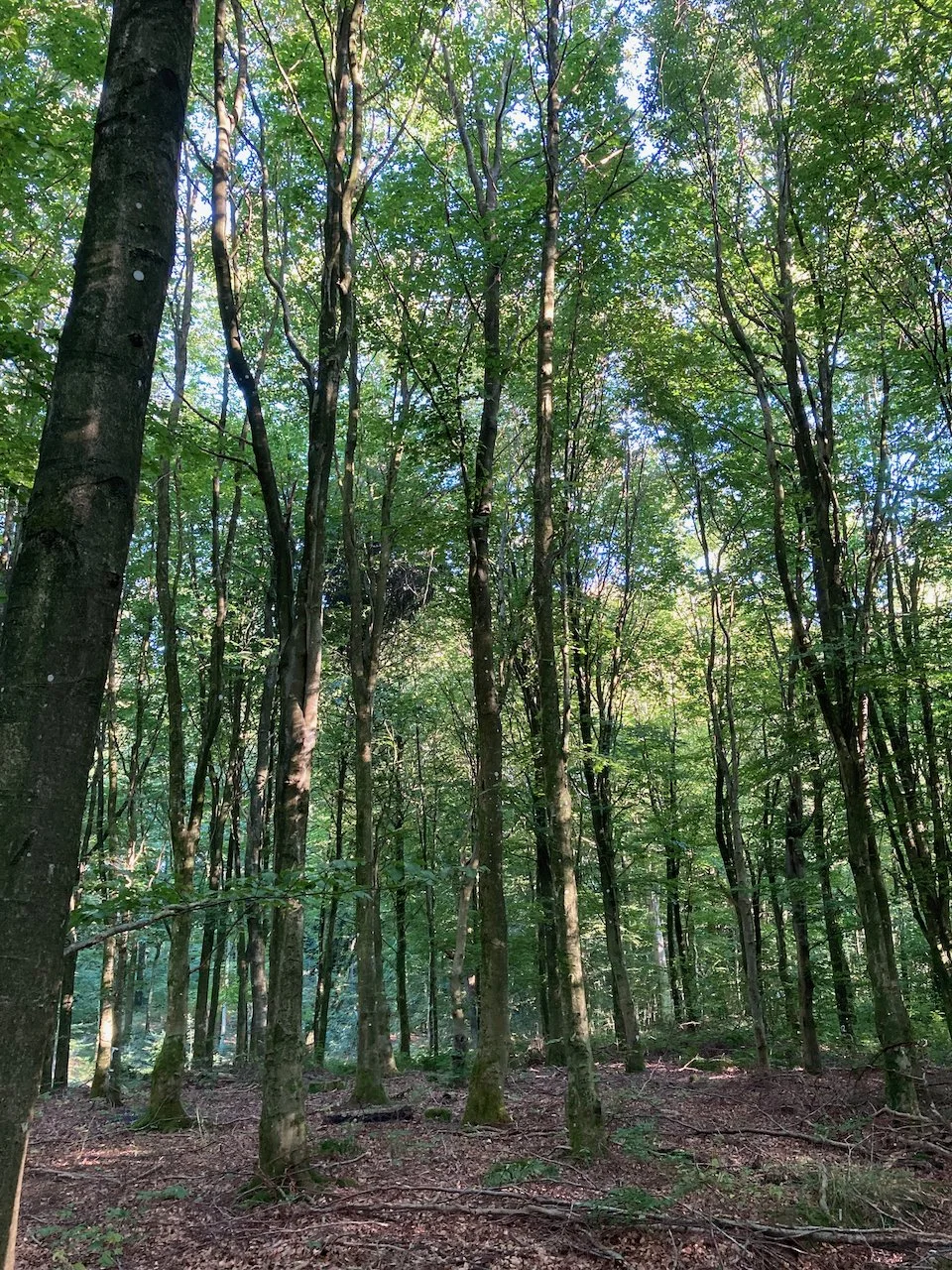Resource use of soil invertebrates in arbuscular- and ectomycorrhizal dominated deciduous forests
Amelie Hauer, Senckenberg Museum of Natural History Görlitz (Germany)
Image credit: Amelie Hauer; Scan of the soil animal community of two samples
Soils host an immense hidden diversity of life that is crucial for soil processes and ecosystem functioning. Among these underground players, soil invertebrates are key drivers of belowground organic matter decomposition and nutrient cycling. By feeding on microbes, plant litter, and each other, they structure the soil food web - a network of feeding interactions that regulates the flow of energy and nutrients. However, understanding exactly what (and how much) soil invertebrates eat has long posed a challenge. Their small size, cryptic behavior, and the fact that they live hidden in the soil make direct observations difficult, which limits our ability to predict how (and if) soil food webs respond to changes in vegetation, land use or climate.
Changes in dominant tree species lead to distinct ecological characteristics, including the type of mycorrhizal association dominating the forest. Most trees form mutualistic partnerships with mycorrhizal fungi, which supply water and nutrients in exchange for carbon. Two major types - arbuscular mycorrhizal fungi (AMF) and ectomycorrhizal fungi (EMF) - differ in how they influence litter chemistry, microbial community composition, root exudation and soil structure. AMF trees produce higher-quality litter that decomposes quickly, fuelling bacterial growth, rapid nutrient turnover and greater diversity of saprotrophic fungi. EMF trees, in contrast, produce lower-quality litter that decomposes more slowly, favoring fungal-based pathways and slower energy flow. Given these fundamental differences, it is likely that these disparities not only shape soil invertebrate communities but also the resources available to them, potentially influencing the feeding behaviour and functional roles that different invertebrate groups play in EMF and AMF forest systems.
Image credit: Amelie Hauer; One of the sampling sites in an ectomycorrhizal forest.
Little is known about whether soil invertebrates maintain consistent plant and microbial food sources in different habitats or adapt their diet to ecosystem context. To address this, we investigated how soil invertebrates utilize bacteria, fungi and plant material, and whether trophic positions (TP) - an organism's place in the food web - vary between AMF- and EMF-dominated forests. We focused on nine taxonomic groups and applied compound-specific isotope analysis of amino acids (CSIA-AA), which estimates basal resource use (where does the energy source come from) and TP of consumers using the δ¹³C and δ¹⁵N signatures in specific amino acids (AAs).
In simple terms, you can think of it like a dinner party: different cooks (plants, bacteria, fungi) each leave a unique “flavour signature” (δ¹³C) in the dishes (AAs) they produce, and the consumers (soil invertebrates) carry those signatures into their own bodies when they eat them. By measuring these signals, we can tell what they have eaten (basal resource use). Meanwhile, the nitrogen signal (δ¹⁵N) acts like a count of how many times a dish has been passed along the table. By the time the food reaches the end of the table (the flow of energy up the food chain), it has passed through several guests and the δ¹⁵N signal shows just how many steps it has traveled (TP).
Our results show that the mycorrhizal type had only a minor influence on soil animal diets. Animals in AMF forests tended to consume slightly more fungi, while those in EMF forests showed a modest increase in bacterial resource use (both not significant). Instead, the identity of the consumer - rather than the mycorrhizal context - was the main determinant of resource use. Smaller taxa, such as Collembola and mites, relied more on fungi; larger taxa, including millipedes, consumed more plant material. Earthworms showed a stronger reliance on bacterial sources. Omnivory was common across all groups, showing that soil invertebrates utilize multiple resources while still showing preferences. Food web structure (the combination of basal resource use and TP results) was broadly similar between forest types. Overall, our findings emphasize that “who you are” matters more than the type of mycorrhizal associations, underlining the importance of functional traits and taxonomy in shaping soil food web dynamics. Despite subtle differences in resource use between forest types, predictable feeding habits of invertebrate groups suggest consistent roles in soil processes, aiding the integration of soil fauna into large-scale food web and ecosystem models.


